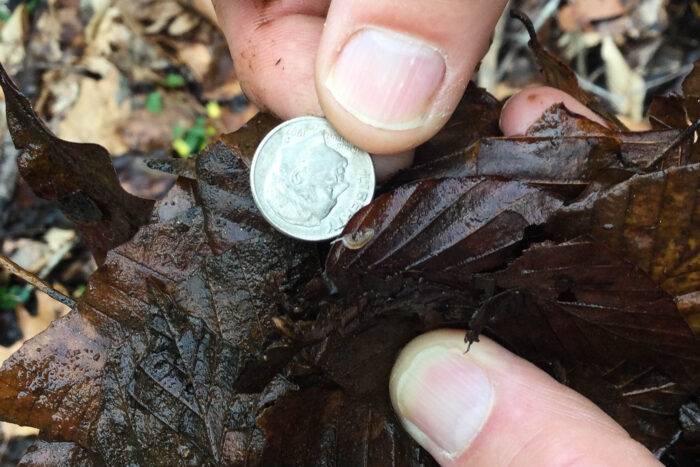Hay's spring amphipod
Stygobromus hayi
The Hay’s spring amphipod is a tiny shrimp-like crustacean that is only found in Washington, D.C.
This section shows one large critter image at a time. Use the thumbnails that follow to select a specific image to display here.

This gallery contains a grid of small thumbnails. Selecting a thumbnail will change the main image in the preceding section.
Appearance
This tiny, shrimp-like crustacean only grows to a centimeter in length. Since they live underground the Hay’s spring amphipod have no eyes or pigmentation. They are so hard to find that testing water quality samples for traces of the crustaceans DNA is a way to see if they are in a body of water rather than seeing the creature itself.
Feeding
This crustacean feeds on decaying plant and organic matter.
Predators
The Hay’s spring amphipod is extremely sensitive to water quality and water pollution. Increased stormwater runoff and habitat fragmentation are the main threat to this species.
Reproduction and life cycle
Not much is known about the Hay’s spring amphipod life cycle, but based on other stygobromus species it is presumed they hatch from eggs, have a juvenile stage and then become adults that live between four and six years.
Females in the species have a brood pouch and carry their eggs. It is unknown if the reproduction is completely sexual or asexual as well. Some stygobromus go through parthenogenesis which is a form of asexual reproduction.
Did you know?
- The Hay’s spring amphipod is one of only two federally listed species within Washington, D.C., and is only found within a small range that includes Rock Creek Park and the National Zoological Park.
- The species was first found in 1938 and declared endangered in 1982.
- The species is only known to live in 2.5 miles of the Lower Rock Creek Watershed in Washington, D.C. There are seven known populations of the Hay’s Spring amphipod in seepage springs in the area.
- In 2016 the creature was named Washington, D.C.’s official “state” amphipod to try and raise public awareness about the endangered species
Sources and additional information
- Stygobromus hayi - U.S. Fish and Wildlife Service
- The amphipod who wasn't there (unless it was) - U.S. Fish and Wildlife Service
- Hay’s Spring Amphipod - Center for Biological Diversity
